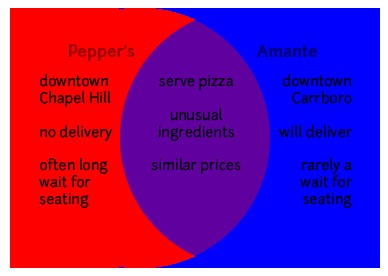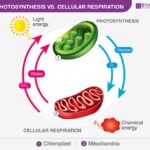In the journey of academic and professional development, the ability to compare and contrast is an indispensable skill. Whether you’re analyzing literary works, evaluating business strategies, or understanding scientific theories, the power to discern similarities and differences is crucial for critical thinking and effective communication. This guide will delve into the art of writing compelling compare and contrast essays, focusing on how to structure your arguments, utilize effective signal words, and ultimately craft writing that is both insightful and persuasive.
Understanding Compare and Contrast Assignments
Instructors often use compare and contrast assignments to encourage deeper engagement with subject matter. These essays are not merely about listing similarities and differences; they are about fostering analytical thinking and revealing a nuanced understanding of the topics at hand. Recognizing these assignments is the first step in mastering them.
Keywords to Identify Compare/Contrast Tasks:
Assignments often explicitly signal the need for comparison and contrast through specific keywords. Look out for terms such as:
- Compare: Focus on similarities.
- Contrast: Highlight differences.
- Compare and Contrast: Examine both similarities and differences.
- Similarities and Differences: Directly asks for an analysis of both.
- Analyze the Relationship: Often implies exploring how two or more subjects are related, which naturally involves comparison and contrast.
Examples of Compare/Contrast Prompts:
- “Compare and contrast the leadership styles of two historical figures.”
- “Analyze the similarities and differences between two economic theories.”
- “Contrast the themes of love and loss in two poems.”
- “Discuss the advantages and disadvantages of two different approaches to project management.”
Sometimes, the prompt may be less direct, requiring you to identify the need for comparison and contrast yourself. Consider these examples:
- “Discuss the treatment of societal change in novels A and B.” (Implies comparing and contrasting their approaches.)
- “How do different scientific models explain this phenomenon?” (Requires contrasting different models.)
- “Evaluate the effectiveness of two marketing campaigns.” (Likely involves comparing their strategies and outcomes.)
In these less explicit cases, consider whether exploring similarities and differences would provide a richer, more analytical response to the prompt. If comparing and contrasting enhances your analysis and helps you address the core question more thoroughly, it is likely an appropriate approach.
The Power of Compare and Contrast Beyond Assignments
The techniques of comparison and contrast are not just for academic essays. They are powerful tools for pre-writing and brainstorming in any writing project. Even when an assignment doesn’t explicitly ask for comparison and contrast, using these methods can sharpen your thinking and generate fresh perspectives.
For instance, if you are arguing for a particular solution to a problem, comparing and contrasting different solutions can strengthen your argument by demonstrating why your chosen solution is superior. By systematically analyzing the pros and cons of various options, you build a more robust and persuasive case.
Consider using comparison and contrast to:
- Explore different perspectives: Comparing viewpoints can reveal nuances and complexities you might otherwise miss.
- Develop arguments: Contrasting your position with alternatives can highlight its strengths and address potential weaknesses.
- Analyze complex topics: Breaking down a subject by comparing and contrasting its different facets can make it more manageable and understandable.
- Generate ideas: The process of finding similarities and differences can spark new insights and directions for your writing.
Uncovering Similarities and Differences: Effective Strategies
To effectively compare and contrast, you need systematic methods for identifying similarities and differences. Visual tools and structured approaches can be incredibly helpful in this process.
1. Venn Diagrams:
Venn diagrams are excellent for visually representing overlapping and distinct characteristics. Draw two (or more) overlapping circles, each representing a subject of your comparison.
- Overlapping Area: In the intersection, list the traits, features, or points that the subjects share. These are your similarities.
- Non-Overlapping Areas: In the separate sections of each circle, list the characteristics unique to each subject. These are your differences.
 Venn diagram indicating that both Pepper
Venn diagram indicating that both Pepper
2. Comparison Charts:
Charts are ideal for a more structured, criteria-based comparison, especially when dealing with multiple subjects or specific points of analysis.
- Criteria: List the specific aspects you want to compare along the left side of the chart. These could be features, characteristics, categories, or any relevant points of analysis.
- Subjects: Across the top of the chart, list the subjects you are comparing.
- Fill the Grid: For each criterion and subject, fill in the corresponding cell with relevant information or descriptions. This allows for a side-by-side comparison across all chosen criteria.
| Feature | Subject A | Subject B | Subject C |
|---|---|---|---|
| Criterion 1 | |||
| Criterion 2 | |||
| Criterion 3 | |||
| … |
Guiding Questions for Comparison:
To generate points of comparison, consider these general questions, adaptable to various subjects:
- Basic Attributes (Objects): Size, shape, color, weight, texture, function, components, origin, cost.
- Historical Periods/Events: Timeline, causes, key figures, social structures, political systems, cultural values, consequences, technological advancements.
- Ideas/Theories: Origin, proponents, core concepts, scope, applications, supporting evidence, criticisms, implications, related theories.
- Literary/Artistic Works: Author/Artist, creation date, genre/medium, style, themes, symbolism, structure, intended audience, critical reception, cultural impact.
- People: Background, demographics, achievements, personality traits, beliefs, motivations, relationships, influence, legacy.
Remember to tailor these questions to the specific assignment and the nature of the subjects you are comparing. What aspects are most relevant and insightful for your analysis?
Selecting Key Points for Your Essay
After brainstorming similarities and differences, you’ll likely have a substantial list. The next crucial step is to select the most relevant and impactful points to include in your essay. Not all similarities and differences are created equal.
Questions to Guide Your Selection:
- Relevance to the Assignment: Does this point directly address the prompt and contribute to answering the core question?
- Relevance to the Course Theme: Does this point connect to broader themes or concepts discussed in the course?
- Significance and Insight: Is this point interesting, revealing, or does it offer a deeper understanding of the subjects?
- Contribution to Your Argument: Does this point support your overall thesis or the argument you are developing?
- Central vs. Peripheral: Is this point a core characteristic or a minor detail? While even obvious points might need mentioning for completeness, prioritize more insightful observations.
- Emphasis: Similarities or Differences? Based on your assignment and your analysis, decide whether similarities or differences are more crucial to emphasize and select points accordingly.
For example, when comparing two novels, focusing on their typeface would be irrelevant in a literature class, while analyzing character development, plot structure, or thematic concerns would be highly relevant. Similarly, pointing out that two poems both mention nature might be less insightful than contrasting their different depictions or interpretations of nature.
Crafting a Strong Thesis Statement
The thesis statement is the backbone of your compare and contrast essay. It should go beyond simply stating that two subjects are similar and different. A strong thesis articulates the significance of the comparison and contrast. It tells your reader what they should learn or understand from your analysis.
Moving Beyond Basic Thesis Statements:
Weak Thesis: “This essay will compare and contrast two types of cars.” (Too broad and descriptive)
Slightly Better: “Cars A and B have some similarities and differences.” (Still vague and lacks analysis)
Improved: “While both Car A and Car B are fuel-efficient and designed for city driving, Car A prioritizes affordability while Car B emphasizes advanced technological features.” (More specific, but still somewhat descriptive)
Strong Analytical Thesis Statements:
- “Despite both being set during wartime, Novel X portrays the conflict’s impact on civilians while Novel Y focuses on the soldiers’ experiences, revealing contrasting perspectives on the human cost of war.” (Analyzes different perspectives and their implications)
- “The contrasting leadership styles of Leaders A and B – one collaborative, the other autocratic – highlight fundamentally different approaches to organizational success, with implications for employee morale and long-term innovation.” (Analyzes different approaches and their consequences)
- “Although both poems explore the theme of nature, Poem X romanticizes nature as a source of solace, whereas Poem Y presents nature as indifferent and powerful, reflecting a shift from Romantic to Victorian sensibilities.” (Analyzes nuanced interpretations and their broader context)
A strong thesis statement:
- Clearly states the subjects being compared and contrasted.
- Identifies the main points of comparison/contrast.
- Articulates the significance or purpose of the comparison.
- Often implies the essay’s organizational structure.
Refer to resources on thesis statement construction to further refine your thesis writing skills.
Structuring Your Compare and Contrast Essay
Effective organization is key to a clear and compelling compare and contrast essay. Two primary organizational structures are commonly used: subject-by-subject and point-by-point.
1. Subject-by-Subject Organization (Block Method):
-
Structure: Discuss all aspects of Subject A first, then discuss all aspects of Subject B. If comparing more than two subjects, follow the same pattern for each.
-
Paragraphing: Each subject might be covered in one paragraph (for shorter essays) or multiple paragraphs (for longer, more detailed analyses).
-
Example (Pizza Places):
- Paragraph 1: Pepper’s Pizza – Ingredients, Location, Atmosphere
- Paragraph 2: Amante Pizza – Ingredients, Location, Atmosphere
- Paragraph 3: Conclusion – Comparing and contrasting Pepper’s and Amante based on the discussed points.
-
Best Used When:
- Subjects are relatively simple.
- Essay is shorter and points are fewer.
- Focus is on providing a general overview of each subject before direct comparison.
- For “lens” comparisons, where one subject (lens) helps understand another.
-
Potential Drawback: Can sometimes lead to a less direct comparison, feeling like two separate descriptions rather than a cohesive analysis. To mitigate this, ensure your thesis is strongly analytical and include a concluding paragraph that explicitly ties the points together and emphasizes the comparison.
2. Point-by-Point Organization (Alternating Method):
-
Structure: Discuss one point of comparison/contrast at a time, addressing both Subject A and Subject B (and others, if applicable) within the same paragraph or section.
-
Paragraphing: Each paragraph focuses on a specific point of comparison, discussing how it relates to each subject.
-
Example (Pizza Places):
- Paragraph 1: Prices at Pepper’s and Amante (Comparison of Price)
- Paragraph 2: Ingredients at Pepper’s and Amante (Comparison of Ingredients)
- Paragraph 3: Atmosphere at Pepper’s and Amante (Contrast of Atmosphere)
- Paragraph 4: Conclusion – Summarizing the overall comparison and contrast based on the points discussed.
-
Best Used When:
- Essay is longer and requires in-depth analysis.
- Points of comparison are complex and need detailed explanation.
- Direct and explicit comparison is desired throughout the essay.
- Aiming for a more integrated and analytical feel.
-
Variation: For more in-depth analysis, dedicate a paragraph pair to each point: one paragraph discussing Point X in relation to Subject A, followed by another paragraph discussing Point X in relation to Subject B.
Choosing the Right Structure:
The best structure depends on the essay’s length, complexity, and the specific goals of the assignment. Point-by-point organization generally leads to a more integrated and analytical comparison, while subject-by-subject can be simpler for shorter essays or when the subjects themselves need more individual description.
Regardless of the chosen structure, clarity is paramount. Use strong topic sentences and transitions to guide your reader and ensure they can easily follow your comparison.
Signal Words: Guiding Your Reader Through Comparison and Contrast
Signal words are essential for making your compare and contrast essay clear and easy to follow. These words act as cues, indicating to your reader whether you are highlighting similarities, differences, or transitions between points. Mastering the use of these signal words enhances the coherence and flow of your writing.
Signal Words for Comparison (Similarities):
- Similarity: like, similar to, similarly, likewise, in the same way, in like manner, also, too, as well as, both, each, equally, in common, share, corresponding
- Example Sentences:
- Like Pepper’s, Amante uses fresh, locally sourced ingredients.
- Similarly, both restaurants offer vegetarian options.
- Both Pepper’s and Amante are popular with students.
- The atmosphere at Restaurant X is also quite lively and energetic.
- Restaurant A shares a commitment to sustainability with Restaurant B.
Signal Words for Contrast (Differences):
- Contrast: unlike, in contrast, on the other hand, however, conversely, nevertheless, nonetheless, yet, still, but, although, even though, while, whereas, differently, difference, distinct, diverge, vary, despite, regardless, opposite, contrary to
- Example Sentences:
- Unlike Amante, Pepper’s offers late-night delivery.
- In contrast, Amante provides a more upscale dining experience.
- However, Pepper’s is often more crowded and noisy.
- While Pepper’s focuses on pizza, Amante has a broader Italian menu.
- Despite their similar price ranges, the ambience of the two restaurants is quite different.
Signal Words for Transition and Qualification:
- Transition: turning to, moving on to, regarding, with respect to, in terms of
- Qualification: while it is true that, although it may seem, admittedly, to some extent, arguably
- Example Sentences:
- Turning to the atmosphere, Pepper’s is known for its vibrant energy.
- With respect to pricing, both restaurants are comparable.
- While it is true that both offer pizza, their styles are distinct.
- Admittedly, both restaurants have their strengths and weaknesses.
Using Signal Words Effectively:
- Strategic Placement: Use signal words at the beginning of sentences or clauses to immediately signal the relationship you are establishing.
- Variety: Employ a range of signal words to avoid repetition and maintain reader engagement.
- Accuracy: Choose signal words that precisely reflect the relationship between the points you are making.
- Topic Sentences: Incorporate signal words into your topic sentences to clearly indicate the focus of each paragraph and its relationship to the overall comparison.
By consciously incorporating these Compare Contrast Signal Words, you can ensure your essay is not only well-organized but also explicitly guides your reader through your analysis, making your arguments more persuasive and your writing more impactful.
Conclusion: Mastering the Art of Comparison
Writing effective compare and contrast essays is a valuable skill that extends far beyond the classroom. By understanding the nuances of comparison and contrast, employing effective organizational structures, crafting strong thesis statements, and strategically using signal words, you can produce writing that is not only informative but also insightful and analytically rich. Embrace the power of comparison to deepen your understanding of the world and communicate your insights with clarity and precision.
By mastering these techniques, you elevate your writing from simple description to insightful analysis, a hallmark of strong academic and professional communication.

